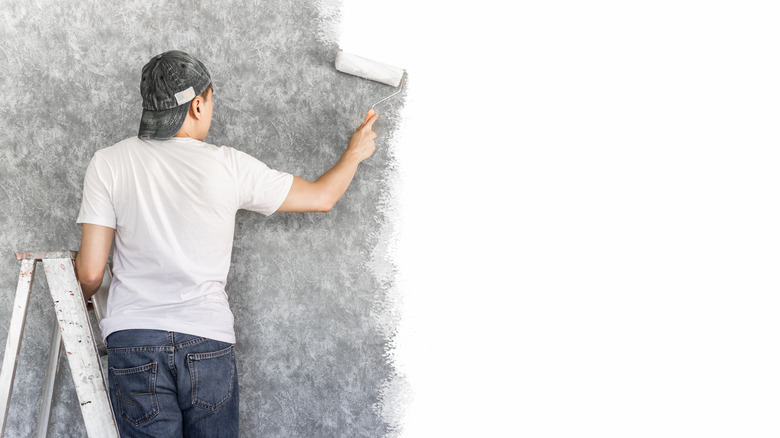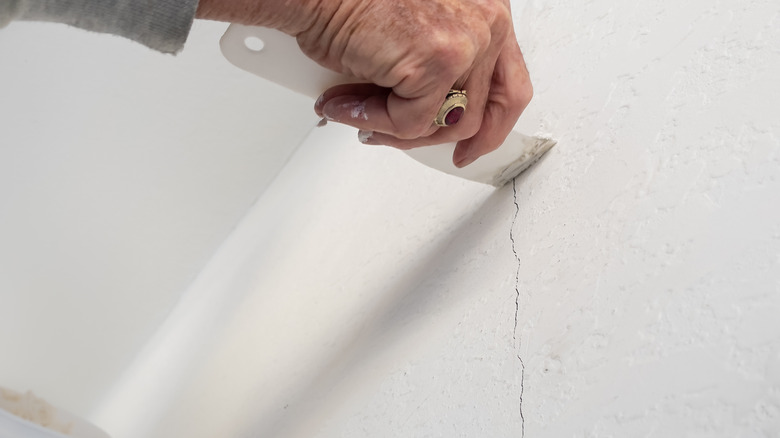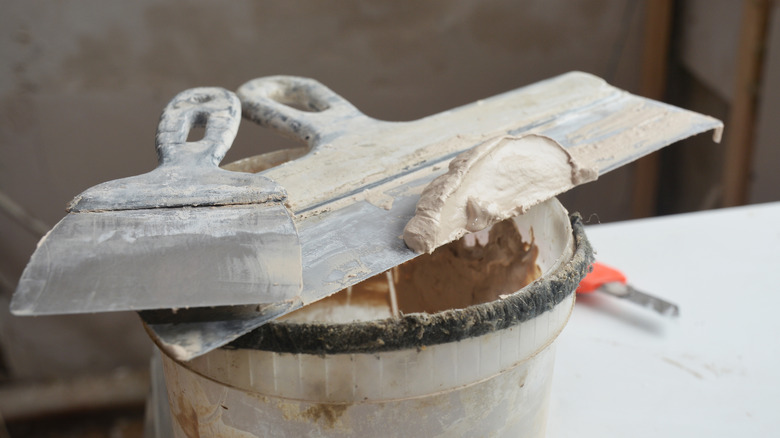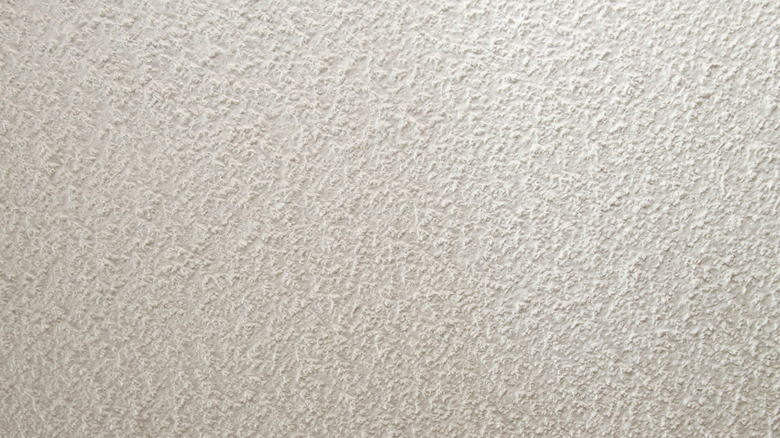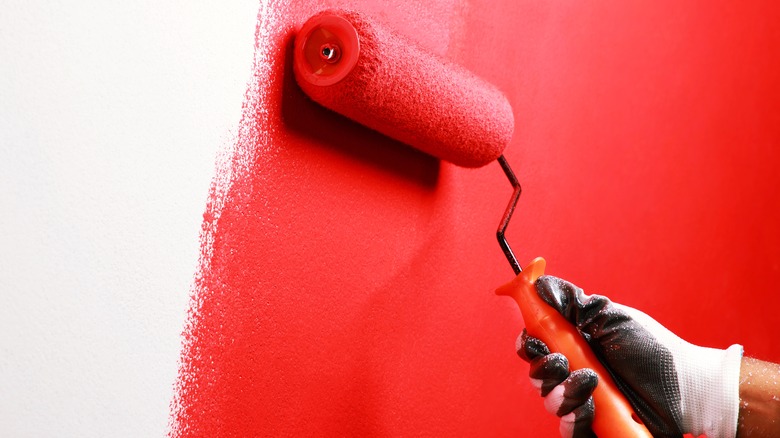How To Add Texture To Your Walls Using Just A Paint Roller
Painting the walls in your home can be so boring and mundane, especially if you've chosen a paint that's so ... predictable. Of course, there's no problem painting your walls a neutral brown or gray shade, but why not jazz up those walls with some texture? D&D Painting says texturing your walls can transform any room into a more creative and unique space, and can hide imperfections and create dimension as well. It can make your room look chicer overall.
There are several methods to adding texture to your walls that don't require hiring professional painters — these are all things you can do all by yourself. The Home Depot suggests using joint compounds and texture sprayers, but those are both costly and time-consuming, which isn't necessary. What if we told you there was an easier, cheaper way to add texture to your walls? To do so, all you need is a wall, some paint, and a paint roller.
Prepping before painting
Just like with regular paint jobs, it's crucial to prep your walls before you texturize them. If you don't take the proper precautions, the paint won't fully adhere to the wall, causing it to chip and wear away. Additionally, as Paintzen explains, walls that haven't been prepped are more susceptible to attracting dirt, dust, and grime. To avoid buildup, dust your walls with either a microfiber towel or vacuum cleaner, then wash them with a non-abrasive sponge before applying a paint primer.
Your walls may have damage that doesn't require complex repairs, so it's key to patch those up before going ahead with any paint. Simple repairs like tiny holes or cracks in the wall are easily fixable, using a drywall compound and a drywall knife. 21OAK suggests pushing the drywall compound mixture into the hole with the knife, then smoothing away any excess. Finish the wall with a layer of drywall primer or flat white latex paint.
Choosing a thickness
According to SFGATE, the thicker the drywall compound, the heavier the texture is going to look. If you're hoping for just a touch of texture, keep your layers light to avoid caking it on; however, chances are, you're still going to need a lot of the drywall compound to completely cover the surface of your wall. The drywall compound, otherwise known as simply "mud," is a super thick substance as-is, so you need to thin it out, no matter how light or heavy you want your texture to look.
To achieve your desired consistency, you'll need to thin out your drywall mud with water. Per Upgraded Home, add 1 cup (or 8 ounces) of water to a 5-gallon bucket of mud and mash the compound with a metal mud masher until there are no more lumps. You may have to do a bit of stirring as well. Add an additional cup of water and repeat the process until your mud is the correct consistency.
Selecting a textured paint
In order to add texture to your walls with a paint roller, you're going to need textured paint. According to MYMOVE, there are a variety of different textures, but some of the most popular textured paints are sand, knockdown, and popcorn. Sand textured paint contains sand-like additives (hence the name), that give it the grainy texture. Knockdown textured paint has a soupy consistency that produces little peaks of paint on the applied surface, which are knocked down before the paint dries. If you're specifically looking for a kind of paint to hide any imperfections or mistakes on your drywall, however, popcorn textured paint (pictured above) is your best bet.
All of these textured paints can be mixed at home, or you can purchase them pre-mixed. The self-mix option allows you to make the exact texture you're looking for because you control the amount of additives in the paint. Either way, you can expect a uniquely textured wall.
Using the right textured paint roller
We've talked about textured paint, now let's talk about textured paint rollers. Different paint types require different paint rollers to achieve the desired texture. To decide which paint roller you're going to use, you need to know the correct paint roller's nap. A "nap" refers to the length and style of a paint roller, according to Tar Heel Painters. The higher the nap, the more textured the paint roller will be. Certain naps correspond with certain textured paints. For example, as SFGATE explains, paint rollers with medium naps made with natural fibers (i.e., lamb's wool) are ideal for textured paints.
Remember, the lower the paint roller's nap, the less textured the wall will appear, so try to find a paint roller with a medium-to-thicker nap. If you're still having trouble deciding which nap to choose to add texture to your walls using just a paint roller, consult a local hardware store to get the help you need.
